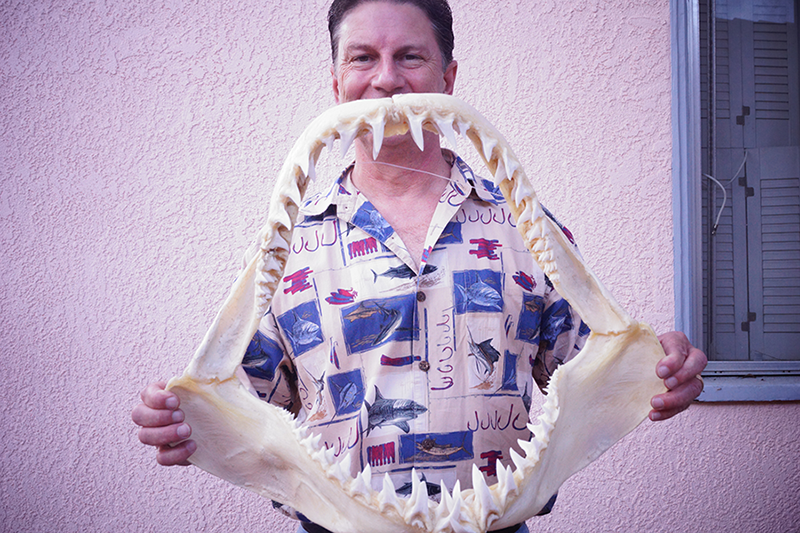
Morning is turning into the afternoon, seals are swimming at the back of the 29 ft. charter boat and seagulls have congregated along the chum slick trailing behind. Suddenly, the seagulls fly away and a mako shark is swimming near the boat. Captain Quinlan grabs a big tuna and throws it into the water to bait the fish. The 1400 lb. shark is hooked and the four-and-a-half hour battle begins. When they finally have the shark on the side of the boat, the captain looks at his client and says, “This is the world record. If you want to kill it, I would understand.”
His client looks at the shark and shakes his head, “No. We agreed that we would release it, I am just here for the experience.”
Captain Steven J. Quinlan grew up fishing Blue Gill in the bayous of Louisiana.
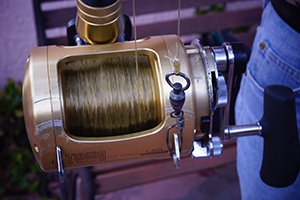 “I was just born with a rod in my hand.”
“I was just born with a rod in my hand.”
But it was not until 1993 when Captain Quinlan got a job as editor of a hunting and fishing publication in California, that he really started to understand and give trophy fishing a try. He started interviewing professional bass fishermen and eventually started joining their fishing outings.
Through the world of competitive fishing, Quinlan met local fisherman Hunter von Leer in 2001, who encouraged him to start entering tournaments.
“It gave me a big edge when I fished with bass pros, but with Hunter taking me under his wing, I learned [about shark fishing] really fast.”
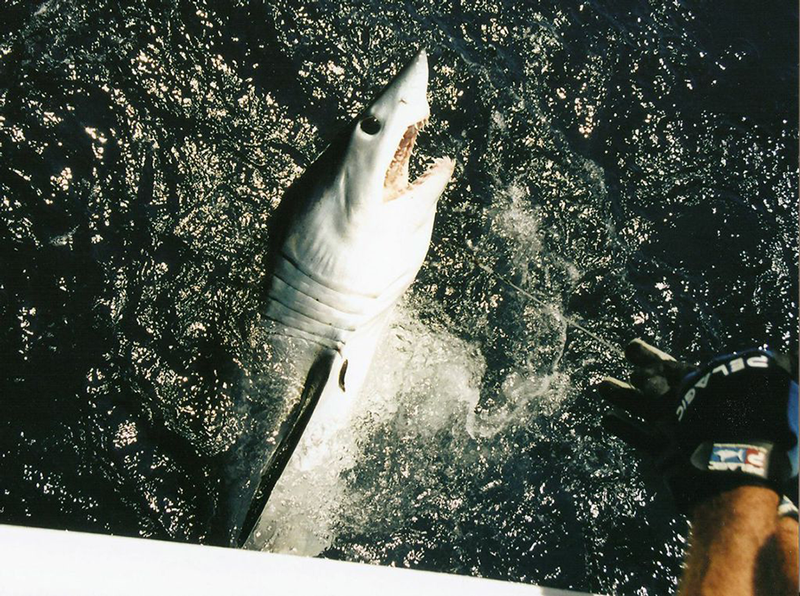 Von Leer taught Quinlan how to site fish, an alternative way to hunt mako sharks. The fisherman leaves a trail of chum behind the boat, enticing anything crossing its path to find the source. When the fish finally reaches the boat, Quinlan throws a line out with bait. This technique prevents bycatch (catching unwanted species or sizes of fish) and gets the shark to swim right up to the back of the boat.
Von Leer taught Quinlan how to site fish, an alternative way to hunt mako sharks. The fisherman leaves a trail of chum behind the boat, enticing anything crossing its path to find the source. When the fish finally reaches the boat, Quinlan throws a line out with bait. This technique prevents bycatch (catching unwanted species or sizes of fish) and gets the shark to swim right up to the back of the boat.
“There are a million advantages to site fishing. You know exactly what it is that you’re getting ready to catch.”
Quinlan also takes advantage of many of the things other fishermen consider to be a nuisance. The seagulls feeding on his chum are, to him, a warning when the shark gets close and what kind of shark it is. The seals hanging out in his chum slick are just another way to intrigue the fish.
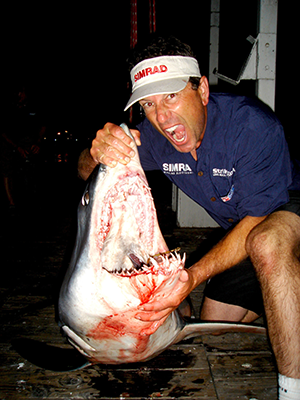 Although his methods are considered unorthodox in the fishing world, Captain Quinlan has won two back-to-back national championships and his $100,000 charter boat on a television series called Shark Hunters. The first year he won by killing a 736 lb. shark, and the following year an 800 lb. catch.
Although his methods are considered unorthodox in the fishing world, Captain Quinlan has won two back-to-back national championships and his $100,000 charter boat on a television series called Shark Hunters. The first year he won by killing a 736 lb. shark, and the following year an 800 lb. catch.
Working as the executive editor of one of the biggest magazines in outdoors sporting, Sports Afield, Quinlan had the opportunity to interview Peter Benchley, creator of Jaws. The interview, very early in his fishing career, gave him a different prospective of shark hunting and his first glimpse of what this field can do to your conscience.
“He told me during is interview he felt responsible for the death of so many fish because of Jaws. He said it was misinterpreted and he just didn’t think about how it could be interpreted. It made people hate Great Whites and gave guys with big egos a chance to go kill something and hang it up and get their picture taken with it.”
Shortly after Shark Hunters, Quinlan had an experience that changed his perspective on shark hunting completely. In 2006, he took out three friends of the producer of the show to catch a big fish.
“I took out some pretty inexperienced guys, and they talked me into killing a big fish. It was a really big fish because they wanted to have their pictures taken. I did and it turned out it was 1175 lb.”
Quinlan had been killing sharks competitively since 2001 and donating the meat to the Long Beach Rescue Mission to feed the homeless. But later, he found that the fish he had been donating had an unhealthy level of mercury.
“I thought to myself this magnificent thing with these idiots standing next to it, never caught a fish bigger than 30 lb. in their lives, and they are all badass looking with this 1175 lb. fish… I almost felt like [the fish’s] life was more valuable than the idiots with their chests out. I said that’s it. I’m not going to do it anymore, but I’m not going to give up charter fishing,” Quinlan said.
“I’m going to go on catching fish and I’m going to go on turning people to the adrenaline rush that I get out of it and share the expertise that it took me years and years to get so I can get big fish every time. The condition will be that we release the fish.”
Shortly after the trip, Quinlan was served a lawsuit for not giving the clients the jaw of the shark. The suit went to court and Quinlan won on the ruling; unless there is an agreement before the boat leaves the dock, the captain gets to keep the catch.
“It brought back memories of my uncle who is dead now. I was bragging to him as a kid about a bunch of birds I had shot with a BB Gun, and he says you know Steven, when you get to my age you learn to respect life a hell of a lot more than you do now, and back then it didn’t mean anything.”
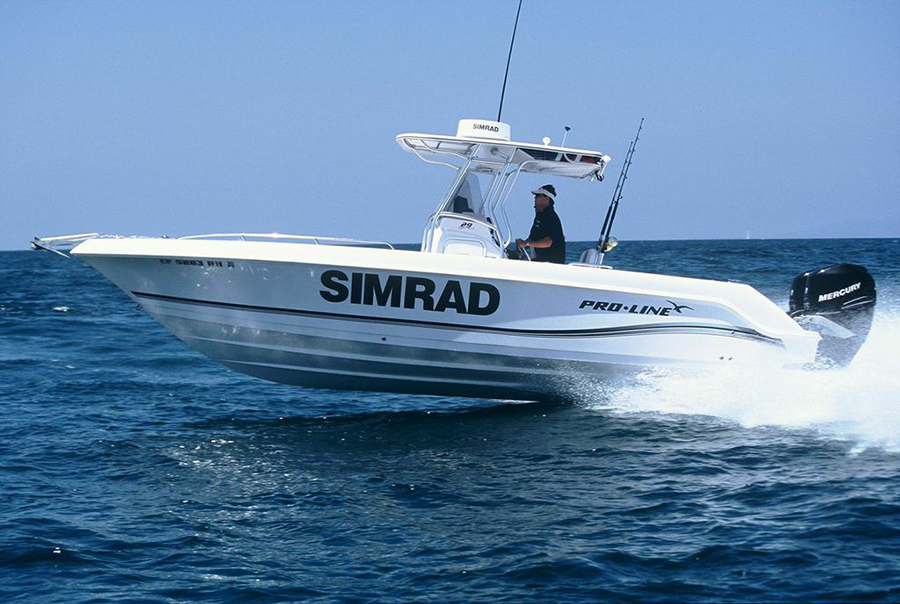
But since, Quinlan has converted to a conservationist.
“You just realize that there are things in the ocean that are just gigantic, they could just swallow you up. It is a total adrenaline rush, whether you’re the one hooking it or whether someone else is hooking it, you know you’re going to be the one dealing with it on the side of the boat, your heart is thumping…to me there is no feeling like it. “
Mako sharks, what Quinlan fishes for, are cousins to the Great White. They are blue water fish and eat just about anything, including porpoises, seals, marlin, and swordfish.
The captain writes articles to raise awareness about shark conservation through “big gene” breeding and has worked with marine biologist tagging fish. Last year he worked with NOAA (National Oceanic and Atmospheric Administration), finding and tagging 1200 lb. and 700 lb. sharks with Popup Archival Transmitting tags. PAT tags stay in the fish for up to a year and collect information about the animals’ whereabouts.
“Every fish is an individual.”
Today Quinlan has his own charter business where he takes people out for catch and release. His rate is $1,500 per run, and he makes videos for his clients, helps them to find replicas, gets them an IGFA (International Game Fish Association) catch certificate—and to this day has never returned without a catch.

